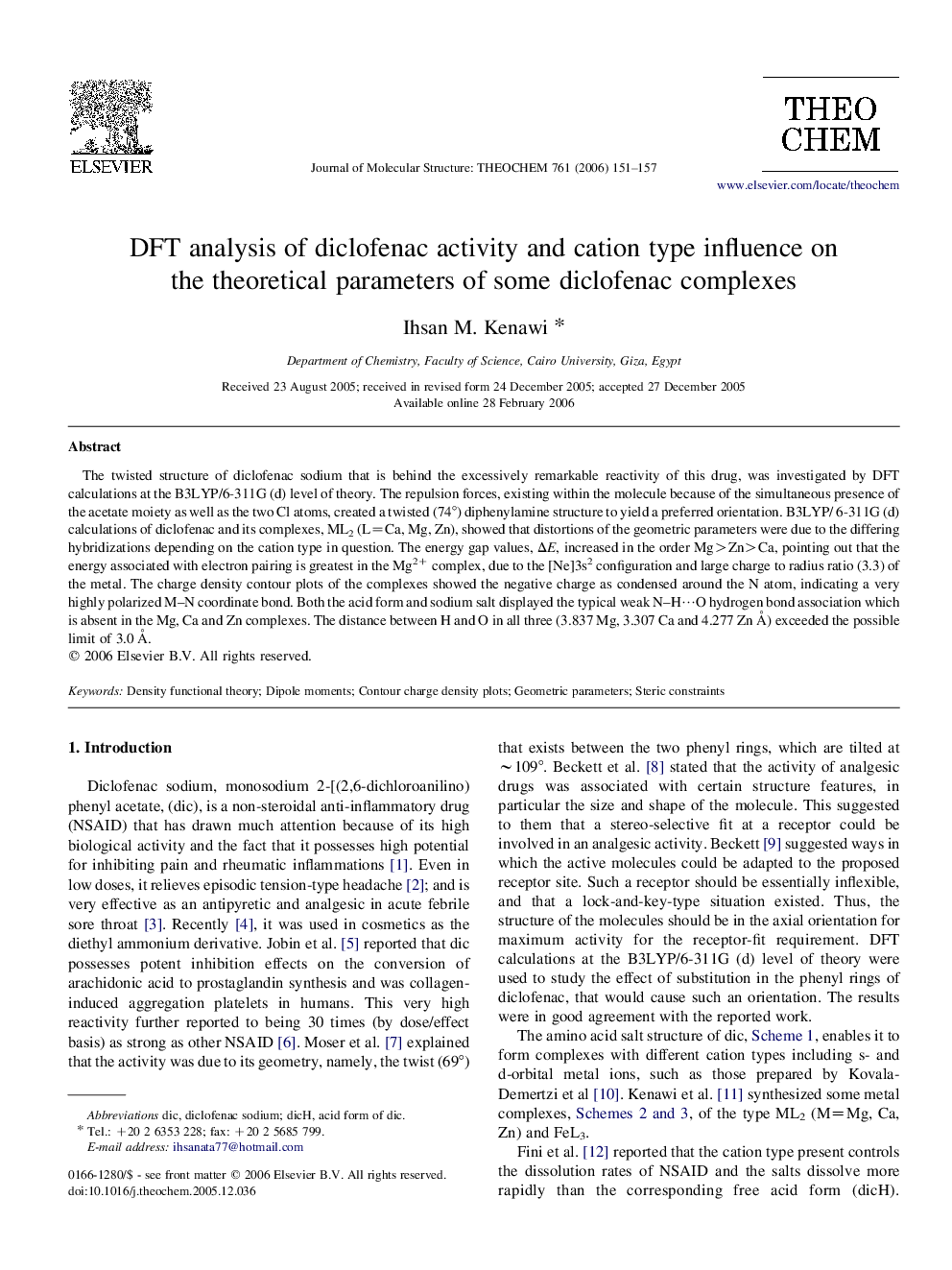| Article ID | Journal | Published Year | Pages | File Type |
|---|---|---|---|---|
| 5418468 | Journal of Molecular Structure: THEOCHEM | 2006 | 7 Pages |
Abstract
The twisted structure of diclofenac sodium that is behind the excessively remarkable reactivity of this drug, was investigated by DFT calculations at the B3LYP/6-311G (d) level of theory. The repulsion forces, existing within the molecule because of the simultaneous presence of the acetate moiety as well as the two Cl atoms, created a twisted (74°) diphenylamine structure to yield a preferred orientation. B3LYP/ 6-311G (d) calculations of diclofenac and its complexes, ML2 (L=Ca, Mg, Zn), showed that distortions of the geometric parameters were due to the differing hybridizations depending on the cation type in question. The energy gap values, ÎE, increased in the order Mg>Zn>Ca, pointing out that the energy associated with electron pairing is greatest in the Mg2+ complex, due to the [Ne]3s2 configuration and large charge to radius ratio (3.3) of the metal. The charge density contour plots of the complexes showed the negative charge as condensed around the N atom, indicating a very highly polarized M-N coordinate bond. Both the acid form and sodium salt displayed the typical weak N-Hâ¯O hydrogen bond association which is absent in the Mg, Ca and Zn complexes. The distance between H and O in all three (3.837 Mg, 3.307 Ca and 4.277 Zn Ã
) exceeded the possible limit of 3.0Â Ã
.
Keywords
Related Topics
Physical Sciences and Engineering
Chemistry
Physical and Theoretical Chemistry
Authors
Ihsan M. Kenawi,
